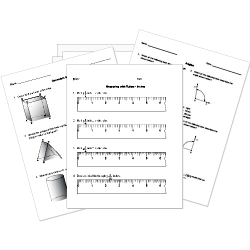Gases
Gases
This lesson aligns with Next Generation Science Standards (NGSS) PS1.A
INTRODUCTION
Matter can be defined as “anything that occupies definite space and has some volume”. It is the “stuff” that is made up of several types of particles, i.e. molecules, atoms and subatomic particles etc. Matter is all around us, e.g. water, food, paper etc. Matter has been categorized into different states, which are solids, liquids and gases. Gases have distinctly different properties from solids and liquids. The remarkable feature of gases is that they have no structure at all. They neither have definite sizes nor shapes. Air is the most common example of gases. In this lesson, we will discuss gases, their types and their properties as well.
GASES
The gaseous state is one of the three forms in which matter exists. Gases can be composed of a single element, such as hydrogen gas(H₂), a compound, such as carbon dioxide (CO₂), or a mixture of several gases, such as air. Gases have unique characteristics that are mentioned below:
- Gases do not have a definite shape and specific volume. They tend to take up the shape and expand to occupy the volume of the container they are placed in.
- The intermolecular forces are very weak as compared to solids and liquids. The intermolecular distance among the particles of gases is relatively large, meaning that they are in a constant state of random motion. They have high kinetic energy.
- The gas particles move around randomly. As a result, they collide not only with each other but also with the walls of the container. Due to this collision, all gases are known to exert pressure on the walls of the container.
TYPES OF GASES
Gases can be classified as monoatomic, diatomic, triatomic and polyatomic.
Monoatomic gases
These gases are made up of particles that consist of a single atom such as helium. All noble gases are known as monoatomic gases.
Diatomic gases
The gases that consist of two identical or different atoms are called diatomic gases. For example, Oxygen(O₂), Nitrogen(N₂), Carbon monoxide(CO) etc.
Triatomic gases
The gases in which molecules are composed of three atoms are called triatomic gases. These atoms can either be the same or different. Examples include carbon dioxide(Co₂), Ozone(O₃), water vapors(H₂O) etc.
Polyatomic gases
The gases having more than two atoms per molecule are called polyatomic gases, e.g. methane.
PROPERTIES OF GASES
Various properties of gases are mentioned below:
Compressibility
Gases are more compressible than solids and liquids. The volume of a gas is composed of a large amount of empty spaces among the gas particles. When we increase the pressure, the particles come close to each other. Consequently, the spaces among the particles are diminished and volume is hugely reduced. The gas becomes compressed. When the temperature is decreased, there is a lesser amount of energy among the particles, i.e. they move less away from each other. As a result, the intermolecular pull becomes more prominent, and the particles come closer. This also decreases the volume of the gas.
Expansibility
When the pressure is decreased on a gas, the constituent particles gain more energy. Their mobility becomes strong, and they move away from each other. The intermolecular pull becomes less prominent which increases the volume of a gas and the gas expands. Similarly, increasing the temperature can also increase the volume of a gas.
Diffusibility
The particles of a gas are in a state of constant random motion at a very high velocity. Empty spaces are present among the gas particles. When two gases are mixed, particles of one gas can easily pass through the intermolecular spaces of the other gas. As a result, both gases get completely and consistently mixed. Thus, a mixture of gases remains homogeneous all the time.
Low Density
As gases have huge intermolecular spaces among their molecules, they have very large volumes when compared to their masses. Therefore, they have fewer densities than other states of matter such as liquids and solids.
Exertion of pressure
Gases apply pressure in all directions. This pressure is due to the collision between the gas particles and the walls of the container in which they are kept, as mentioned earlier.
SUMMARY
- Gas is a fundamental state of matter which is made up of particles that are loosely bonded together by weak intermolecular forces.
- They do not have a definite shape and definite volume. They can occupy the shape of the vessel in which they are kept.
- Gases are more compressible than solids and liquids as they can be compressed easily by increasing the pressure and decreasing the temperature. Vice versa is also true.
- Gases have low densities and high kinetic energy. Moreover, they exert pressure in all directions.
Related Worksheets:













